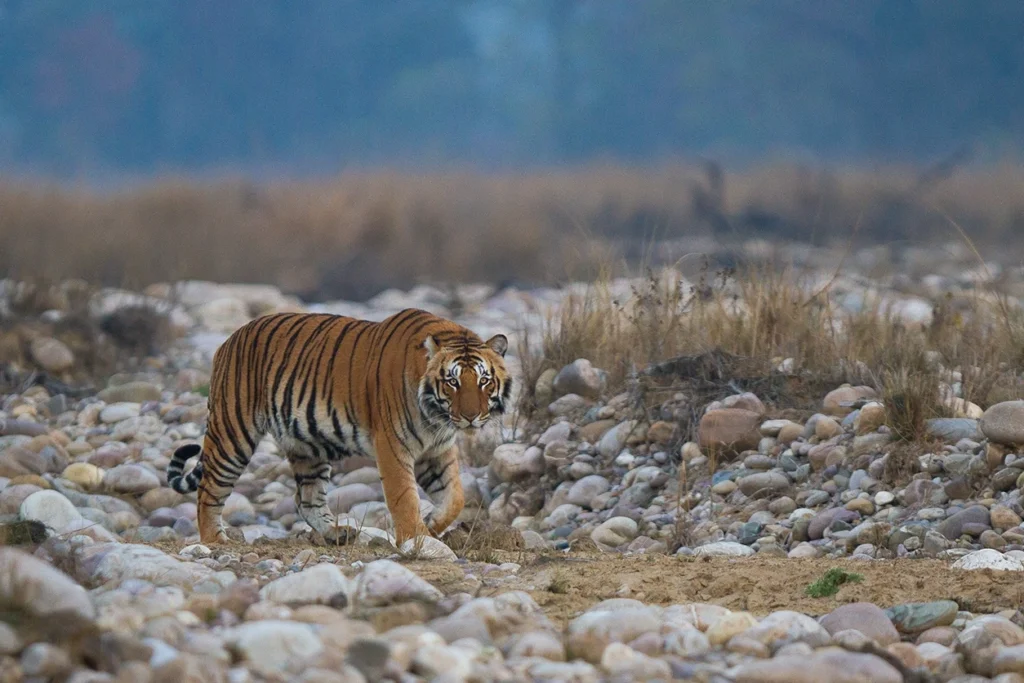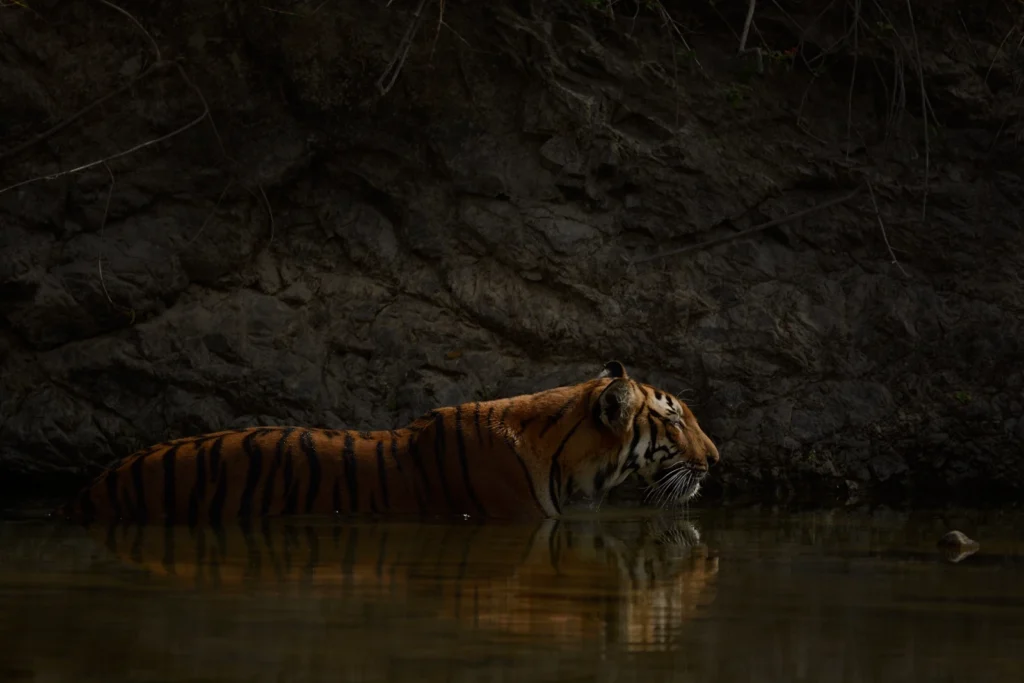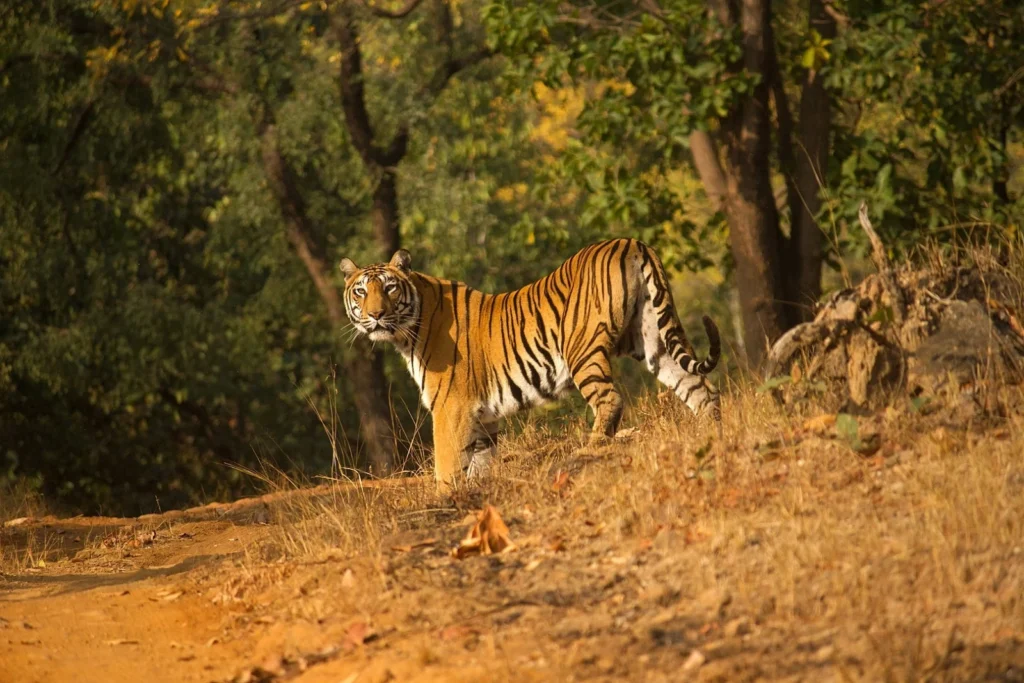The Bengal tiger (Panthera tigris tigris) is one of the largest and most powerful predators on the planet. It is a symbol of strength, majesty and wild nature. This subspecies of tiger lives in the dense forests of India, Bangladesh, Nepal, and Bhutan, possessing incredible agility, power, and grace.
In this article, we will look at origin, anatomy, behavior, lifestyle, unique features and interesting facts about the Bengal tiger, which is not only the king of the jungle but also one of the best predators in the world.

📌 Scientific classification
🔹 The Kingdom: Animals (Animalia)
🔹 Type: Chordal (Chordata)
🔹 Class: Mammals (Mammalia)
🔹 Row: Predatory animals (Carnivora)
🔹 Family: Feline (Felidae)
🔹 Gender: Panthers (Panthera)
🔹 View: Tiger (Panthera tigris)
🔹 Subspecies: The Bengal tiger (Panthera tigris tigris)
🎨 Description and appearance
The Bengal tiger is one of the largest representatives of the cat family. His powerful body, strong paws, and sharp claws make him a the perfect predator.
🔸 Body length: 2.4 - 3.1 m (including tail)
🔸 Height at the withers: 90 - 110 cm
🔸 Weight of males: 180 - 260 kg
🔸 Weight of females: 100 - 160 kg
🔸 The color of the fur: deep orange with black stripes
🔸 White color: occurs in rare white Bengal tigers
🔸 Oko: can see in the dark 6 times better than humans

🌍 Habitat
Bengal tigers live in the:
✔ India - the largest population, about 75% of all Bengal tigers 🌿
✔ Bangladesh - especially in the Sundarbans region 🏝
✔ Nepal - lives in national parks and reserves ⛰
✔ Bhutan - found in dense mountain forests 🌲
💡 Sundarbans is the only place in the world where tigers have adapted to life in mangrove forests and can swim between islands.
🦴 What does the Bengal tiger eat?
The Bengal tiger Supreme Predatorthat hunts large mammals.
🔹 The main prey:
✔ Deer, antelopes 🦌
✔ Wild boars 🐗
✔ Gaurs (wild bulls) 🦬
✔ Monkeys, hares, peacocks 🐒🐇

✔ Crocodiles and even bears! 🐊🐻
💡 The tiger's chip: hunts from ambushtracking its prey for hours and then attacking lightning speed (up to 60 km/h).
🏠 Lifestyle and behavior
🔸 Single hunter - Unlike lions, tigers do not form prides and live alone.
🔸 Vast territories - one tiger can control the area up to 100 km².
🔸 A great swimmer - can swim several kilometers in pursuit of prey.
🔸 Loud roar - heard on 3 km away in the dense jungle!
🔸 Marks the territory with urine and scratches on trees.
🍼 Reproduction and upbringing of babies
🔹 Mating season: year-round, peaking in November - April
🔹 Pregnancy: 3.5 months
🔹 The number of tiger cubs: 2 - 4
🔹 Mother takes care of babies up to 2 years old
🔹 Cubs start hunting at 1 year of age
💡 A tigress is a very caring mother who is ready to fight even a bear to protect her cubs.

🔥 Enemies and threats
❌ The main enemy is man! Due to poaching and deforestation, Bengal tigers are under threat.
📉 Population: about 2500 individuals in the wild.
🆘 Status: Endangered species according to the IUCN classification.
💡 Fact: in the 20th century, the number of tigers decreased by 95% due to hunting and habitat loss.
🤯 Interesting facts about the Bengal tiger
🔹 The biggest cat in the world! Males can weigh more than African lions.
🔹 The wool is unique! No two tigers have the same stripes.
🔹 It lives up to 15 years in the wild and up to 20 years in captivity.
🔹 One tiger bite can break the spine of a deer or wild boar!
🔹 The white Bengal tiger is not a separate species, but the result of a genetic mutation.
🔹 Tigers are known for their excellent memory - better than humans!
🎯 Conclusion
The Bengal tiger is the real king of the jungleHe is incredibly strong, graceful and fearless. He is one of the best hunters in nature, a symbol of power and wild beauty.
🆘 But because of human activity, its existence is under threat. To save tigers, we need to protect their habitat and fight poaching.
💬 Would you like to see a Bengal tiger in the wild? 🐯🔥